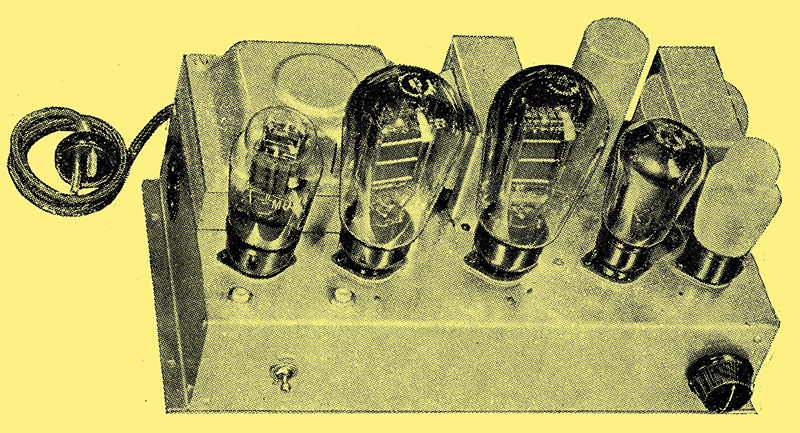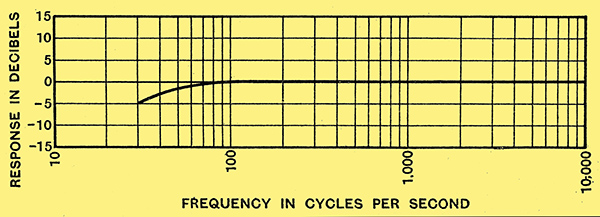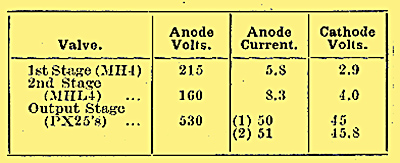|
Inexpensive AC operated model with a good frequency response.

The complete amplifier.
The GA12S amplifier made by HartleyTurner Radio, Ltd., is a general purpose model for AC operation and having a rated undistorted output of 12 Watts. It employs four valves, excluding the rectifier, and the circuit consists of an input stage resistance-capacity coupled to a. penultimate amplifier and then two PX25 valves operated in push-pull, the coupling between these two stages being a parallel-fed transformer.
An output transformer with a ratio of 40 to 1 is included to match the last stage to a 4 Ohm impedance loud speaker. The power supply is quite orthodox apart from the fact that generous smoothing is employed. LT is obtained from two separate 4 Volt windings on the mains transformer with the load equally distributed between them and each supplies one early stage and one of the output valves.
The valves fitted are Marconi MH4, MHL4 and two PX25s, while the mains rectifier is an MU14.
Provision is made to take power for operating a wireless receiving unit, the supply point giving about 20 mA at 530 Volts for the anodes, and 2 Amps at 4 Volts for the filaments. Voltage dropping resistances will, of course, be needed to bring the HT supply down to the required working value. If more than two valves are used the extra LT current could be obtained by tapping across the LT winding not internally joined to this supply point. An additional two Amps is available from this source.
Although the amplifier is designed on strictly economical lines, liberties have not been taken to further this end and each stage is adequately de-coupled, and separate cathode bias resistances, with electrolytic by-pass capacitors, are fitted. This also applies to the push-pull stage, so in the unlikely event of one valve failing, it cannot lead to damage to the other.
As a result of these precautions the amplifier is rock stable even without an earth connection, and the hum level is exceptionally low, though screened input leads are essential in view of the high overall gain. Incidentally an input volume control of 50,000 Ohms is included.

Response curve of Hartley Turner 12 Watt Amplifier.
The amplifier has a particularly good frequency response for, as the curve here reproduced shows, it is ostensibly flat from about 50 Hz to 10,000 Hz, and this includes the output transformer.
The rated undistorted output of 12 Watts was actually exceeded with our model, the output, measured at the anodes of the last stage, indicating that a shade under 14 Watts is given before noticeable distortion appears.
To obtain this power an input of 0.7 Volt was required, which gives an amplification of approximately 430. This is sufficient for many types of transverse current carbon microphones, and was certainly ample for The Wireless World model.
Investigation reveals that the output stage is operated at about 485 Volts and the bias resistances increased to 900 Ohms, which gives a grid bias of -45 Volts in each case for an anode consumption of 50 mA. This, no doubt, accounts for the slight increase in power output observed during our tests. The early valves are operated in the normal manner, the Table giving the measured voltages and currents for each stage.

The above measurements were made from the chassis.
With each model is supplied full instructions as to the method of installation either for radio, for gramophone, or for microphone reproduction, together with a circuit diagram giving the value of all components. The latter will be found very useful by all users, but especially so by experimenters who may wish to employ the amplifier for purposes not envisaged in the instructions.
To sum up, the GA12S amplifier is a soundly designed model fully capable of giving its rated output power and it has a characteristic which is virtually fiat over the normal working range of audible frequencies, and at the price of £13 10s., including valves, it represents good value for money.
HBD
|